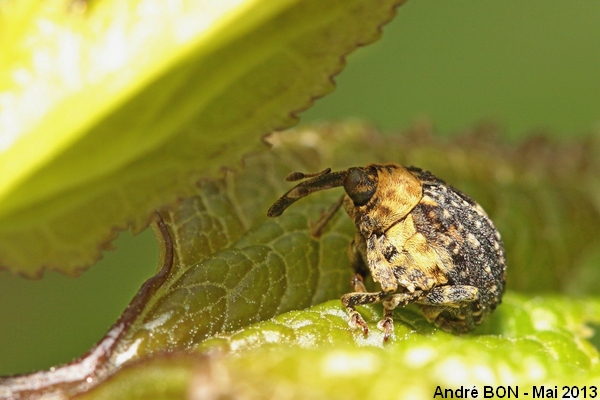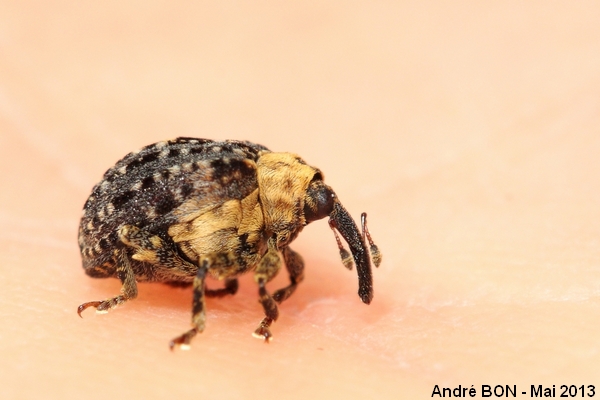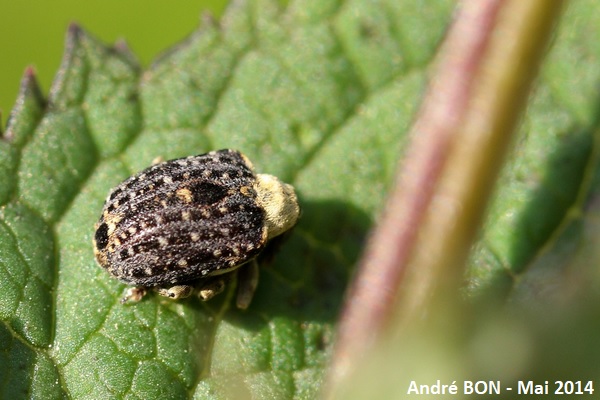


| Figwort Weevil (Cionus scrophulariae (Linnaeus, 1758)) |



|
|
Scientific name: Cionus scrophulariae (Linnaeus, 1758) Common name: Figwort Weevil French name: Charançon de la Scrofulaire Order: Coleoptera Family: Curculionidae Wingspan : 4 to 5 mm. Biotope: All places where plants of the Scrophulariaceae family grow, including Figworts, Mulleins and Buddleia. Geographic area: Europe, the Caucasus, Asia Minor, central Asia, introduced to North America. Observation period : May to August. |
The weevils of the Cionus genus are Curculionidae with a very small and almost globulous body. They have antennae with ten articles whose four last ones form a knob. The hind legs do not permit Cionus sp to jump. They are found on plants. There are 37 species in Europe. The Figwort Weevil is observed on the leaves and flowers of plants of the Scrophulariaceae family. The body is blackish to dark grey. The pronotum and the shoulders show a dense yellowish grey pubescence. One interstice out of two on the elytra bears alternating black and grey spots. There are two round black spots on the junction of the elytra (merge of semi circular spots on each elytron), one close to the base and the other close to the apex. They are bordered by pale spots on one side. The antennae and the tarsi are reddish brown. Cionus tuberculosus, which is found on the same plants, bears a broad longitudinal black hairless stripe at the centre of the pronotum. It is a slightly smaller size. Cionus scrophulariae only shows a thin black stripe at the centre of the pronotum. Cionus hortulanus is as lighter colour and a smaller size. The yellowish-coloured larvae with a black head and a black pro-thoracic plate, grow on the leaves of the host plants. They pupate inside spherical cocoons attached to the plant. |
| [To know more about the Figwort Weevil] [Next picture] [Top] |

|
I had many difficulties to get a correct picture of this Figwort Weevil in its natural environment because of its small size and because of the lack of light. |
| [To know more about the Figwort Weevil] [Next picture] [Previous picture] [Top] |

|
It's much easier to shoot pictures with the insect in hand. |
| [To know more about the Figwort Weevil] [Previous picture] [Top] |

|
Here is an upper side view showing the patterns on the elytra. |